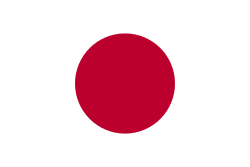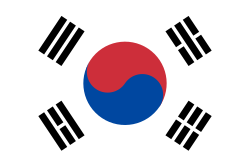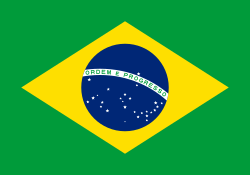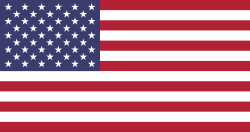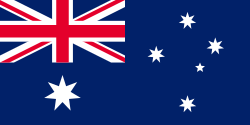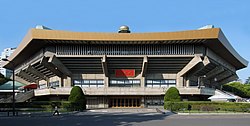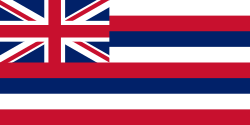Kendō-Weltmeisterschaft
Die Kendō-Weltmeisterschaft (engl. World Kendo Championships, WKC) wird von der Internationalen Kendoföderation (IKF) seit 1970 veranstaltet. Diese Kendō-Meisterschaft wird alle 3 Jahre an wechselnden Orten ausgetragen. Es werden Einzel- und Mannschaftskämpfe ausgetragen.[1] Der Austragungsort wechselt gewöhnlich zwischen Asien, Amerika und Europa. Seit 1994 werden auch die Weltmeister der Frauen ermittelt. Im Umfeld der Weltmeisterschaft finden auch Dan-Prüfungen und Kampfrichterlehrgänge statt.
Bei der 13. Kendō-Weltmeisterschaft 2006 in Taipeh wurde erstmals das japanische Team nicht Weltmeister und musste sich mit einem dritten Platz begnügen.
Die 15. Kendō-Weltmeisterschaft wurde vom 23. bis zum 28. Mai 2012 in Novara in Italien ausgetragen.

Weltmeisterschaften
Herren-Einzel
| Jahr | Ort | Weltmeister | 2. Platz | 3. Platz | 3. Platz | |
|---|---|---|---|---|---|---|
| 1970 | Japan Tokyo | Mitsuru Kobayashi | T. Toda | Y. Taniguchi | T. Ota | |
| 1973 | USA Los Angeles | Tatsushi Sakuragi | H. Yano | T. Fujita | J.R. Rhee | |
| 1976 | Vereinigtes Königreich Milton Keynes | Eijo Yoko | K. Ono | R. Hosoda | C.-T. Wu | |
| 1979 | Japan Sapporo | Hironori Yamada | K. Furukawa | H. Aikawa | K. Terada | |
| 1982 | Brasilien São Paulo | Minoru Makita | T. Kosaka | W. Okajima | H. Yasugahira | |
| 1985 | Frankreich Paris | Kunishide Koda | H. Ogawa | J.C. Park | S.I. Kim | |
| 1988 | Südkorea Seoul | Isao Okido | Akira Hayashi | H. Sakata | K.N. Kim | |
| 1991 | Kanada Toronto | S. Muto | H. Sakata | M. Yamamoto | S. Shimizu | |
| 1994 | Frankreich Paris | H. Takahashi | K. Takei | S. Hirano | N. Eiga | |
| 1997 | Japan Kyōto | M.Miyazaki | F.Miyazaki | T.Ishida | Park | |
| 2000 | USA Santa Clara | Naoki Eiga | Kentaro Takenaka | Tsuneharo Someya | Sung-Soo Hong | |
| 2003 | Vereinigtes Königreich Glasgow | Hiromitsu Sato | Hidenori Iwasa | Kun-Bai Lim | Mitsunobu Sato | |
| 2006 | Taiwan Taipei | Masaomi Hojo | Takeshi Tanaka | Sang-Hoon Kang | Gil-Hyun Oh | |
| 2009 | Brasilien São Paulo | Shoji Teramoto | Byung-Hoon Park | Kim | Choi | |
| 2012 | Italien Novara | Susumu Takanabe | Wan-Soo Kim | Tae-Hyun Kim | Kosuke Furukawa | |
| 2015 | Japan Tokyo | Tadakatsu Amishiro | Yuya Takenouchi | Man-Uk Jang | Hidehisa Nishimura | |
| 2018 | Südkorea Incheon | Sho Ando | Jin-Yong Jo | Yuya Takenouchi | Byung-Hoon Park | |
| 2024 | Italien Mailand | Keita Hoshiko | Kenshiro Matsuzaki | Shoshi Ohira | Keita Kimura |
Herren-Mannschaft
| Jahr | Weltmeister | 2. Platz | 3. Platz | 3. Platz | |
|---|---|---|---|---|---|
| 1970 | |||||
| 1973 | |||||
| 1976 | |||||
| 1979 | |||||
| 1982 | |||||
| 1985 | |||||
| 1988 | |||||
| 1991 | |||||
| 1994 | |||||
| 1997 | |||||
| 2000 | |||||
| 2003 | |||||
| 2006 | |||||
| 2009 | |||||
| 2012 | |||||
| 2015 | |||||
| 2018 | |||||
| 2024 |
Damen-Einzel
| Jahr | Weltmeister | 2. Platz | 3. Platz | 3. Platz | |
|---|---|---|---|---|---|
| 1994 | A. Horibe | Christiane Sasakura | E.H. Kwon | J.Y Kwon | |
| 1997 | M. Kimura | S. Mogi | W. Nakano | H.J. Cho | |
| 2000 | Tomoko Kawano | Keiko Baba | Hiroyo Yano | Shizuka Asahina | |
| 2003 | Keiko Baba | Yuka Tsubota | Shizuka Asahina | Kei Okada | |
| 2006 | Saeko Sugimoto | Kanako Komuro | Eri Inagaki | Mika Shimokawa | |
| 2009 | Yukiko Takami | Sachie Shojima | Chikano Shizato | Eliete Harumi Takashima | |
| 2012 | Yoko Sakuma | Kana Kurokawa | Mana Kawagoe | Sayuri Shodai | |
| 2015 | Mizuki Matsumoto | Yun Yung Hu | Bo Kyung Won | Yukiko Takami | |
| 2018 | Mizuki Matsumoto | Mariko Yamamoto | Maika Senoo | Mei Fujimoto | |
| 2024 | Mihiro Kondo | Mari Suenaga | Minori Sato | Maika Senoo |
Damen-Mannschaft
| Jahr | Weltmeister | 2. Platz | 3. Platz | 3. Platz | |
|---|---|---|---|---|---|
| 1994 | |||||
| 1997 | |||||
| 2000 | |||||
| 2003 | |||||
| 2006 | |||||
| 2009 | |||||
| 2012 | |||||
| 2015 | |||||
| 2018 | |||||
| 2024 |
Einzelnachweise
Weblinks
Auf dieser Seite verwendete Medien
Chinese Taipei Olympic Flag. According to the official website of Chinese Taipei Olympic Committee, Blue Sky(circle) & White Sun(triangles) above the Olympic rings is neither the National Emblem of the Republic of China, nor the Party Emblem of Kuomintang (KMT), but a design in between, where the triangles do not extend to the edge of the blue circle, as registered at International Olympic Committee in 1981 and digitally rendered in 2013. Besides, the blue outline of the five-petaled plum blossom is broader than the red one. Moreover, the CMYK code of the blue one and the Blue Sky & White Sun is "C100-M100-Y0-K0", and different from the Olympic rings (C100-M25-Y0-K0). Note that it's the only version recognized by IOC.
Chinese Taipei Olympic Flag. According to the official website of Chinese Taipei Olympic Committee, Blue Sky(circle) & White Sun(triangles) above the Olympic rings is neither the National Emblem of the Republic of China, nor the Party Emblem of Kuomintang (KMT), but a design in between, where the triangles do not extend to the edge of the blue circle, as registered at International Olympic Committee in 1981 and digitally rendered in 2013. Besides, the blue outline of the five-petaled plum blossom is broader than the red one. Moreover, the CMYK code of the blue one and the Blue Sky & White Sun is "C100-M100-Y0-K0", and different from the Olympic rings (C100-M25-Y0-K0). Note that it's the only version recognized by IOC.
Flag of Canada introduced in 1965, using Pantone colours. This design replaced the Canadian Red Ensign design.
Flag of Australia, when congruence with this colour chart is required (i.e. when a "less bright" version is needed).
See Flag of Australia.svg for main file information.Autor/Urheber: Wiiii, Lizenz: CC BY-SA 3.0
Nippon Budokan, Chiyoda-ku Tokyo Japan, designed by Mamoru Yamada in 1964.
Flag of Hong Kong (1959–97). Granted on 21 January 1959, used until 30 June 1997
